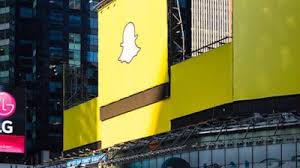Snapchat IPO Investors Have Now All Lost Money on Snap Stock

Snap stock has fallen below its IPO price of $ 17 for the first time, roughly four months after the maker of Snapchat went public in March.
After briefly touching the $ 17 threshold in mid-June, Snap’s stock price fell to an all-time low of $ 16.99 at market close on Monday. That means all the investors who bought into the disappearing-message app company’s much-hyped stock market debut have officially lost money.
Most people who bought Snap (snap) stock, which opened its first trading day at $ 24—soaring 41% out of the gate—have lost even more. An Uber driver who invested when shares hit $ 25 on Snap’s IPO day has lost 32% of his money. And Snap has shed more than $ 10 billion in stock market value in the meantime, with its market cap, which once topped $ 31 billion, now at about $ 20 billion.
Even as stocks of competing social media companies such as Facebook (fb) and Twitter (twtr) rose Monday, shares of Snap tumbled more than 1%, as Wall Street fretted that some of its biggest shareholders will dump their stock en masse later this month.
While many of Snapchat’s IPO backers are currently prohibited from selling the stock during what’s known as a lock-up period, the expiration of those restrictions is less than three weeks away, on July 29. Even Snap’s bullish supporters are getting jittery about a potential stock plunge if those IPO shareholders decide to sell the first chance they get. Some insiders and pre-IPO investors will also be eligible to sell their stakes on that date, and some of them could theoretically sell at a profit even if Snap share prices stay below the IPO price.
Credit Suisse, which has an “outperform” rating on Snap stock, slashed its target price from $ 30 to $ 25 Monday morning, noting that as many as 711 million shares—or about 60% of all Snap stock—could be sold when the lock-up expires.
There are also doubts about Snapchat’s ability to grow and attract advertising dollars as fast as investors had hoped. “While we were hoping for Snap to exhibit a more comfortable growth path, we are reminded that nascent companies sometimes grow in fits and starts,” Credit Suisse analyst Stephen Ju wrote in a note explaining the target price cut.
Due to a delayed rollout of a new platform designed to make it easier to buy ads on Snapchat, Ju also lowered his expectations for how much Snap made in revenue last quarter, which the company will disclose when it next reports earnings later this summer.
Credit Suisse, along with Wall Street as a whole, no longer believes Snap will reach $ 1 billion in sales this year—a goal once considered key in justifying Snap’s lofty valuation. Though the company has yet to make a profit, Snap stock trades at more than 20 times estimated 2017 sales; by that measure, it’s nearly twice as expensive as Facebook stock.
That also sets Snap investors up for disappointment if Snapchat fails to live up to their hopes, as illustrated by their reactions to the company’s first public earnings report in May. When those results missed analysts’ expectations by a long shot, Snap stock plummeted 25% in a matter of minutes.
Some investors who bought Snap stock since its IPO, but who were not bound by the lock-up period, have already decided to bail: A couple of Fidelity mutual funds, including the Fidelity Flex Large Cap Growth fund, which maintained a small position in Snap, sold almost half their shares in May.
As the lock-up expiration date approaches, other owners of Snap stock may wish to follow suit.


